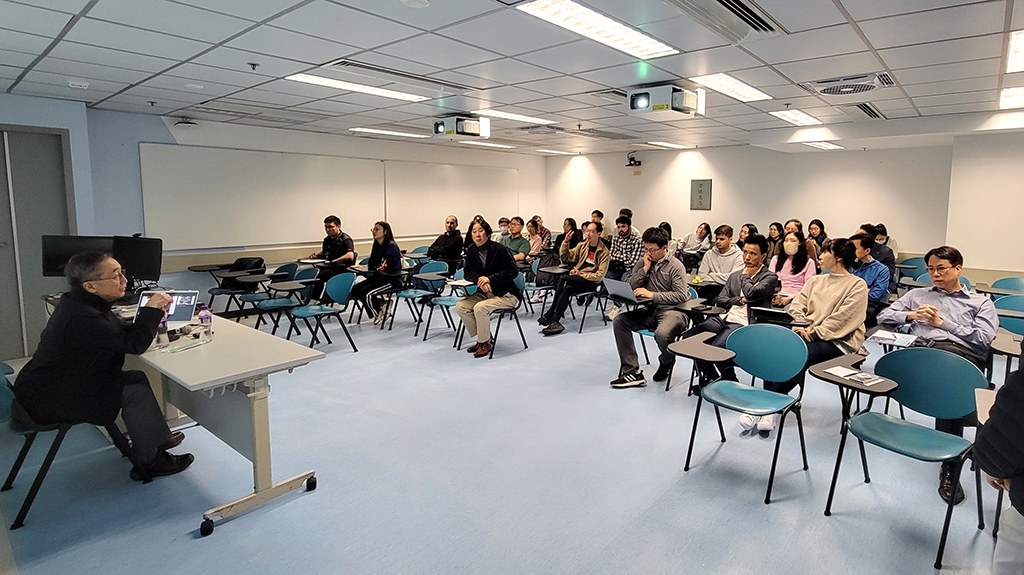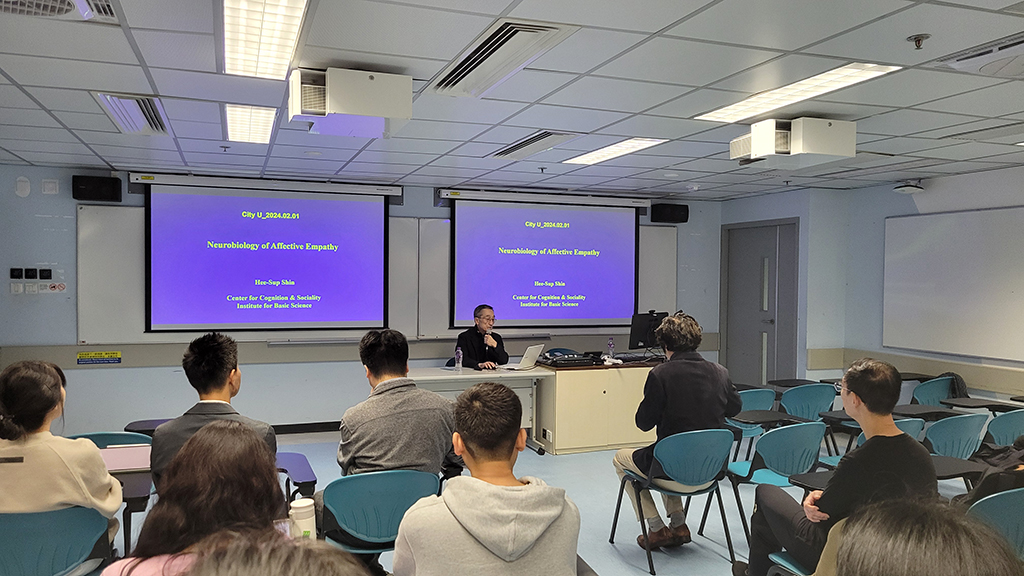


On February 1, 2024, the Department of Neuroscience extended an invitation to Professor Hee-Sup SHIN, a distinguished neuroscientist from South Korea, to present his research on the neurobiology of affective empathy. Prof. Shin’s pioneering work has significantly contributed to our understanding of the complex mechanisms underlying neural circuits and their impact on cognition and behavior, making substantial advancements in the field.
During his lecture, Professor Shin started by elucidating the concepts of empathy and sympathy. A range of behaviors associated with empathy, including emotional contagion, prosocial behavior, and theory of mind, can complicate the precise definition of empathy. He emphasized that emotional contagion, the fundamental form of empathy, entails the ability to comprehend and share the emotions of others. Furthermore, both animals and humans exhibit observational fear, a type of emotional contagion. Impairment to observational fear contributes to psychiatric disorders such as depression, anxiety, autism spectrum disorders, and schizophrenia.
Professor Shin presented their research methodology for investigating observational fear using a mouse model. In this approach, one mouse received an aversive footshock stimulus, while another mouse, separated by a transparent wall on the opposite side of the chamber, observed this aversive stimulus. Notably, when the observing mouse was a sibling or cagemate of the mouse experiencing the aversive stimuli, it exhibited heightened freezing responses, indicating increased levels of observational fear and empathetic behavior.
In addition, Professor Shin provided a detailed explanation of the underlying mechanism of observational fear. He highlighted that their mouse model of observational fear exhibited heightened activity in the right anterior cingulate cortex (ACC), similar to findings in human studies. He further clarified that the right ACC plays a crucial role in observational fear learning, while the right amygdala is important for fear recall. Through their investigation across various mouse strains, Professor Shin's team discovered that the 129S1 strain demonstrated a heightened sensitivity to observational fear learning. Through RNA sequencing, they identified a mutation in the neurexin 3 (Nrxn3) gene as the cause of this increased sensitivity to observational fear. Notably, the deletion of Nrxn3 in somatostatin (SST) neurons within the ACC specifically triggered observational fear. Conversely, inhibiting the activity of SST neurons led to a suppression of observational fear responses. Subsequently, Professor Shin delved into the neural circuitry underlying observational fear. He discussed how inhibiting the circuit connecting the right ACC to the right amygdala effectively suppressed observational fear in naïve mice. Conversely, inhibiting the circuit linking the dorsal hippocampus to the ACC suppressed observational fear in trained mice. Notably, during observational fear, rACC exhibited heightened theta rhythms ranging from 5 to 7 Hz, and inhibiting specifically theta-2 but not theta-1 activity proved to be effective in inhibiting observational fear responses.
In summary, Professor Shin highlighted the importance of the Nrnx3 gene and ACC neural circuitry mechanism that underlies affective empathy. His groundbreaking studies have shed new light on understanding and potentially treating neuropsychiatric disorders linked to affective empathy and impaired observational fear responses. These findings hold great promise for advancing therapeutic strategies in this field.